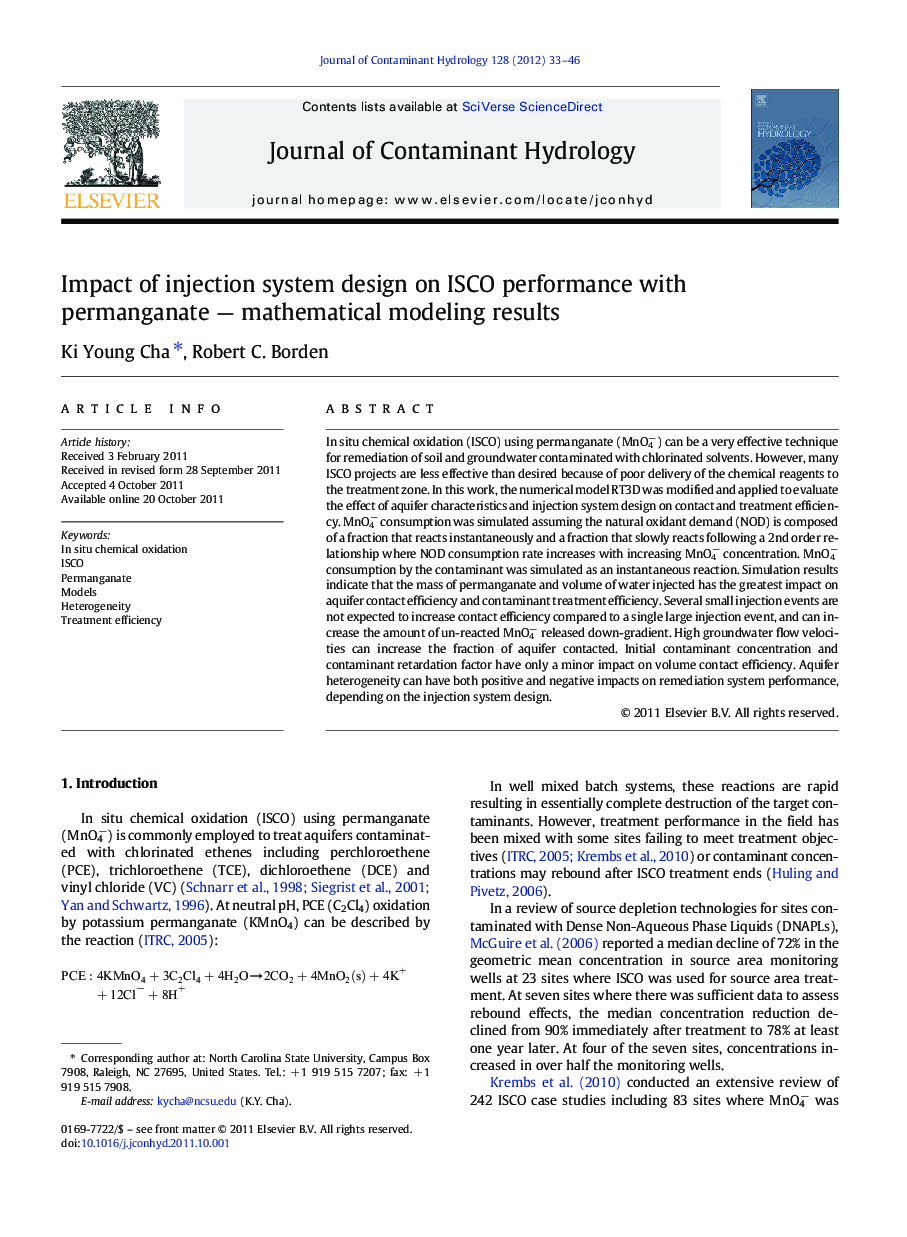| کد مقاله | کد نشریه | سال انتشار | مقاله انگلیسی | نسخه تمام متن |
|---|---|---|---|---|
| 4546899 | 1627072 | 2012 | 14 صفحه PDF | دانلود رایگان |

In situ chemical oxidation (ISCO) using permanganate (MnO4−) can be a very effective technique for remediation of soil and groundwater contaminated with chlorinated solvents. However, many ISCO projects are less effective than desired because of poor delivery of the chemical reagents to the treatment zone. In this work, the numerical model RT3D was modified and applied to evaluate the effect of aquifer characteristics and injection system design on contact and treatment efficiency. MnO4− consumption was simulated assuming the natural oxidant demand (NOD) is composed of a fraction that reacts instantaneously and a fraction that slowly reacts following a 2nd order relationship where NOD consumption rate increases with increasing MnO4− concentration. MnO4− consumption by the contaminant was simulated as an instantaneous reaction. Simulation results indicate that the mass of permanganate and volume of water injected has the greatest impact on aquifer contact efficiency and contaminant treatment efficiency. Several small injection events are not expected to increase contact efficiency compared to a single large injection event, and can increase the amount of un-reacted MnO4− released down-gradient. High groundwater flow velocities can increase the fraction of aquifer contacted. Initial contaminant concentration and contaminant retardation factor have only a minor impact on volume contact efficiency. Aquifer heterogeneity can have both positive and negative impacts on remediation system performance, depending on the injection system design.
► RT3D was used to evaluate the effect of injection design and aquifer characteristic.
► A 2nd order model simulate MnO4− consumption by NOD and contaminant.
► Mass of MnO4 − and injected water volume has greatest impact on contact efficiency.
► Single large injection has higher contact efficiency than several small injections.
► Contaminant concentration and retardation factor have minor impact.
Journal: Journal of Contaminant Hydrology - Volume 128, Issues 1–4, 1 February 2012, Pages 33–46